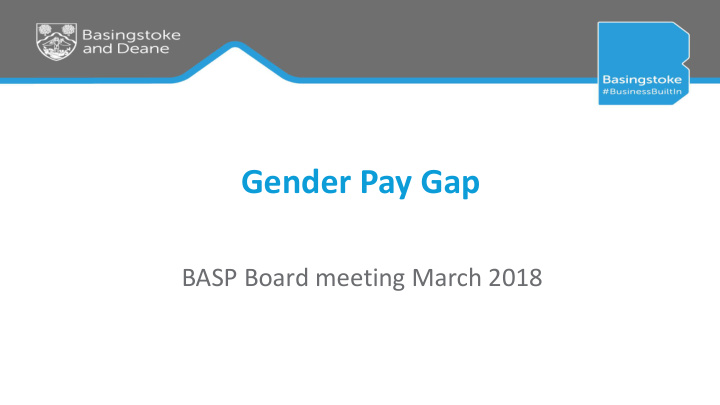



Gender Pay Gap BASP Board meeting March 2018
• What does ‘gender pay gap’ refer to? • Legislative framework • What do the statistics tell us for Basingstoke and Deane? • What can BASP partners do?
“ The gender pay gap differs from equal pay as it is concerned with the differences in the average pay between men and women over a period of time no matter what their role is. Equal pay deals with the pay differences between men and women who carry out the same or similar jobs”. • http://www.acas.org.uk/index.aspx?articleid=1811
The Equality Act 2010 (and associated regulations) states that: • Companies with more than 250 employees are obliged to publish information about the gender pay gap in their organisation by 5 April (approx. 13% of Basingstoke businesses) o Difference between hourly rate of pay for female and male employees o Difference between the average bonus paid to female and male employees o Proportions of female and male employees who receive bonuses o Relative proportions of female and male employees in each quartile pay band
Provisional ASHE 2017 data: • Overall weekly full time wages in Basingstoke and Deane higher than UK, England and South East averages • Male full time earnings are among the highest for Hampshire districts • Female full time earnings are higher than national average, similar to Hampshire and South East averages but lower than East Hampshire, Hart and Winchester • UK gender pay gap for full time workers is 9.1% (all employees is 18.4%) • Basingstoke and Deane gender pay gap for full time workers is 20.6% (all employees is 27.3%) • Basingstoke and Deane is in the lower quartile for all UK local authorities for gender pay gap measure
Potential contributory factors? • Borough’s industrial sector structure • Distribution of males/females across occupations • Private/public sector workforce distribution • Distance travelled to work
Over to you…
Recommend
More recommend